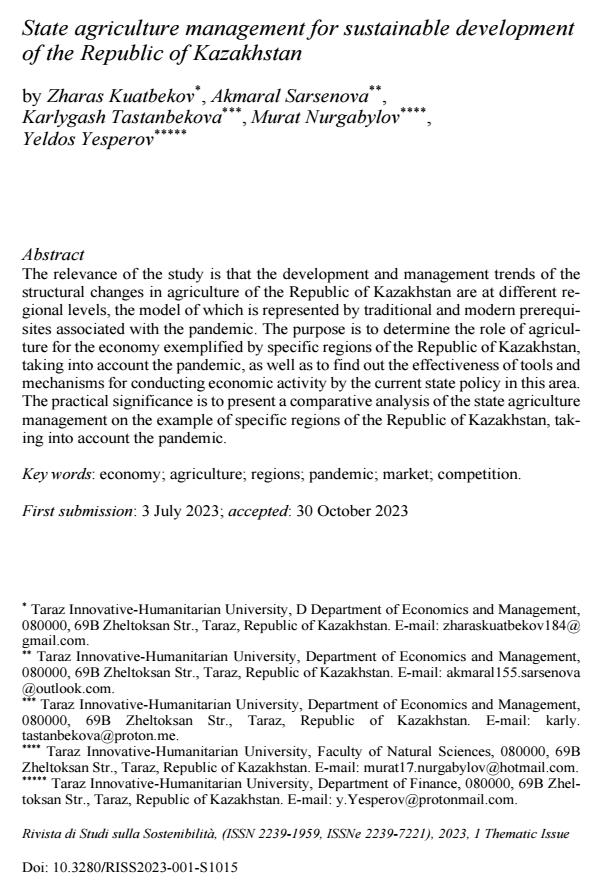State agriculture management for sustainable development of the Republic of Kazakhstan
Titolo Rivista RIVISTA DI STUDI SULLA SOSTENIBILITA'
Autori/Curatori Zharas Kuatbekov, Akmaral Sarsenova, Karlygash Tastanbekova, Murat Nurgabylov, Yeldos Yespero
Anno di pubblicazione 2023 Fascicolo 2023/1 T.
Lingua Inglese Numero pagine 16 P. 233-248 Dimensione file 69 KB
DOI 10.3280/RISS2023-001-S1015
Il DOI è il codice a barre della proprietà intellettuale: per saperne di più
clicca qui
Qui sotto puoi vedere in anteprima la prima pagina di questo articolo.
Se questo articolo ti interessa, lo puoi acquistare (e scaricare in formato pdf) seguendo le facili indicazioni per acquistare il download credit. Acquista Download Credits per scaricare questo Articolo in formato PDF

FrancoAngeli è membro della Publishers International Linking Association, Inc (PILA)associazione indipendente e non profit per facilitare (attraverso i servizi tecnologici implementati da CrossRef.org) l’accesso degli studiosi ai contenuti digitali nelle pubblicazioni professionali e scientifiche
The relevance of the study is that the development and management trends of the structural changes in agriculture of the Republic of Kazakhstan are at different re- gional levels, the model of which is represented by traditional and modern prerequi- sites associated with the pandemic. The purpose is to determine the role of agricul- ture for the economy exemplified by specific regions of the Republic of Kazakhstan, taking into account the pandemic, as well as to find out the effectiveness of tools and mechanisms for conducting economic activity by the current state policy in this area. The practical significance is to present a comparative analysis of the state agriculture management on the example of specific regions of the Republic of Kazakhstan, tak- ing into account the pandemic.
Parole chiave:economy; agriculture; regions; pandemic; market; competition.
Zharas Kuatbekov, Akmaral Sarsenova, Karlygash Tastanbekova, Murat Nurgabylov, Yeldos Yespero, State agriculture management for sustainable development of the Republic of Kazakhstan in "RIVISTA DI STUDI SULLA SOSTENIBILITA'" 1 T./2023, pp 233-248, DOI: 10.3280/RISS2023-001-S1015